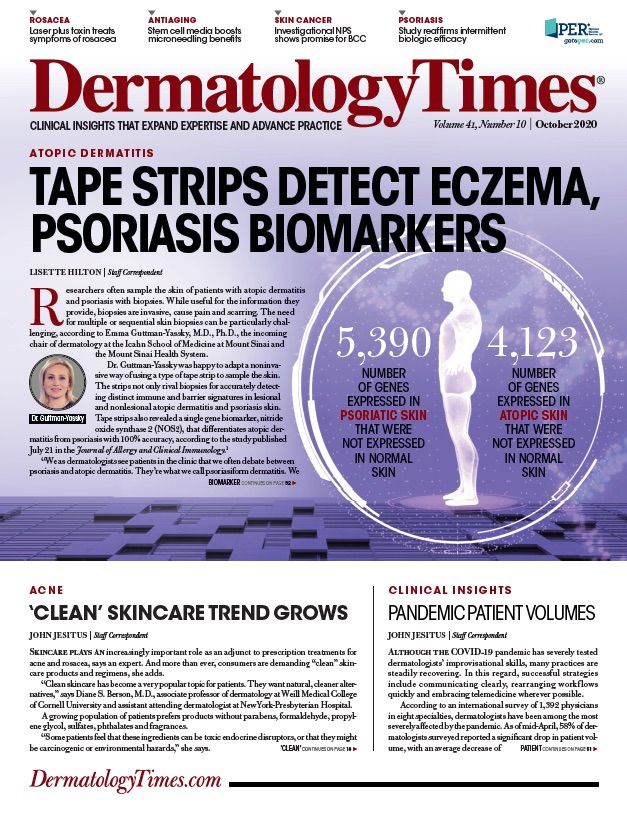- Case-Based Roundtable
- General Dermatology
- Eczema
- Chronic Hand Eczema
- Alopecia
- Aesthetics
- Vitiligo
- COVID-19
- Actinic Keratosis
- Precision Medicine and Biologics
- Rare Disease
- Wound Care
- Rosacea
- Psoriasis
- Psoriatic Arthritis
- Atopic Dermatitis
- Melasma
- NP and PA
- Skin Cancer
- Hidradenitis Suppurativa
- Drug Watch
- Pigmentary Disorders
- Acne
- Pediatric Dermatology
- Practice Management
- Prurigo Nodularis
- Buy-and-Bill
Publication
Article
Dermatology Times
Trial compares NMSC destructive techniques
Author(s):
A recent study showed that curettage and cryotherapy, and electrodesiccation and curettage are two techniques that have comparable cure rates. The study’s findings highlight the efficacy and reliability of these treatment approaches for minimally invasive cutaneous carcinomas.
There are several different treatment approaches currently being used to address low-risk nonmelanoma skin cancers such as basal cell carcinoma (BCC) and squamous cell carcinoma (SCC). A recent study found that curettage-cryosurgery (C&C) and electrodesiccation and curettage (ED&C) are two common techniques that have comparable cure rates after a one-year follow-up period, underscoring the sound therapeutic benefit of both treatment approaches.
Of all nonmelanoma skin cancers, BCC comprises approximately 75-80% of these lesions and SCC comprises approximately 20%, experts say. Both are associated with significant morbidity, aesthetic concerns and financial burden. Numerous treatment approaches including surgery, topicals, photodynamic therapy (PDT) and destruction have shown efficacy in clearing these minimally invasive tumors. ED&C is the most common procedure used for minimally invasive BCCs and is recommended as a first-line treatment by the National Comprehensive Cancer Network (NCCN). Similarly, cure rates have also shown to be close to 99% for SCC when this method is used.
In a recent multicenter, prospective, comparative study, Suzel Fournier, M.D., from the oncology division of the CHU of Québec, University of Laval Research Center, Québec, Canada, and colleagues, evaluated the cure rates of minimally invasive BCC and SCC lesions when using C&C or ED&C in a cohort of 100 adult Caucasian male and female patients. Study participants were randomized 1:1 to receive either C&C and ED&C treatment, with cure rates evaluated at six, 12, 18 and 24 months, and aesthetic appearance of scars at 12 months post procedure. Evaluated on a scale from 1-10, the aesthetic appearance of the scars was assessed using the Patient and Observer Scar Assessment Scale (POSAS), which combines the assessments of both physician and patients. The average age of patients receiving C&C (n=53) and ED&C (n=47) treatment was 74 and 77 years, respectively.
Results showed that at the 12-month follow-up, only one patient had a recurrence of cutaneous carcinoma in the C&C cohort (98% cure rate), while no recurrence occurred in the patients treated with ED&C (100% cure rate), statistically demonstrating non-inferiority of the C&C approach, and achieving the primary outcome goal. The aesthetic appearance of scars also showed better results with the C&C approach at the 12-month follow-up, however this was not statistically significant. No other recurrences were recorded in either study group at the 6-, 18-, and 24-month follow-up time points.
Patients’ evaluation of the aesthetic appearance of scars as reflected in the mean POSAS score was 1.39 and 1.50 in the C&C and C&E patient groups, respectively. Data also showed that a global score of 1 (best possible score) was recorded by 74% and 66% of the C&C and ED&C groups, respectively. The researchers noted that the same trend was seen in the clinician evaluations, revealing an overall score of 1 for 36% and 33% of C&C and ED&C study patients, respectively.
According to the researchers, this is the first clinical study evaluating and comparing the efficacy of C&C and ED&C with respect to cure rates and aesthetic appearance of scars for low-risk BCC and SCC tumors.
“Our study tends to demonstrate that C&C provides a high cure rate for minimally invasive basal and squamous cell carcinomas. These findings are comparable to other studies with similar protocols, but longer follow-ups. We’ve demonstrated that the C&C technique seems noninferior to the C&E method found in main guide- lines, and as such we believe that it should be investigated more thoroughly as a first-line therapy,” the study authors wrote.
Regarding aesthetic scar outcomes, the researchers said that future trials could include more objective measurements for scar assessment such as Narrow-Band Spectrophotometry, Tissue Ultrasound Palpation System, and Cutometer Skin Elasticity Meter in order to help minimize potential information bias due to the subjective assessment of scars. In addition, a larger patient study cohort could also help in evaluating the different scars based on anatomical location in future studies.
Disclosures:
The authors report no relevant disclosures.
Reference:
1 Fournier S, Laroche A, Leblanc M, et al. Prospective Clinical Trial Comparing Curettage and Cryosurgery to Curettage and Electrodesiccation in the Management of Minimally Invasive Basal and Squamous Cell Carcinomas. J Cutan Med Surg. 2020 Jul 28;1203475420943258. doi: 10.1177/1203475420943258. Online ahead of print.






